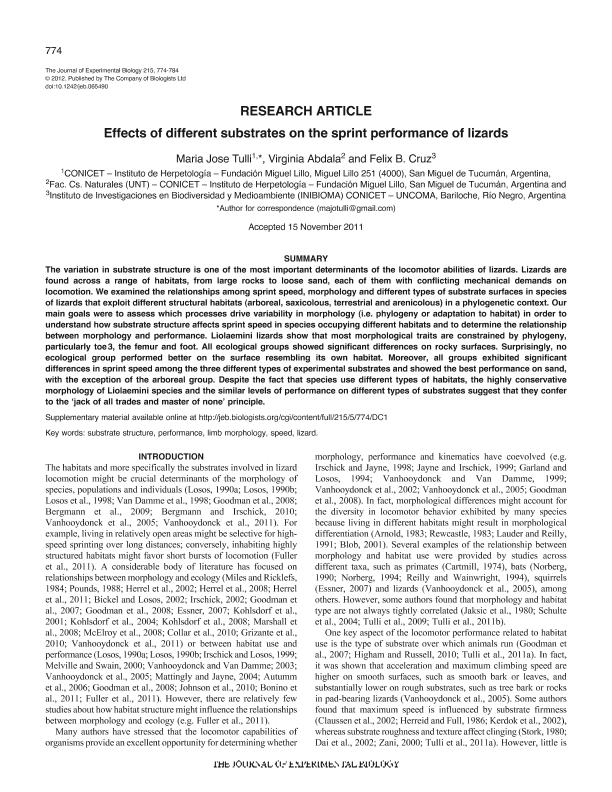Artículo
Effects of different substrates on the sprint performance of lizards
Fecha de publicación:
02/2012
Editorial:
Company of Biologists
Revista:
Journal of Experimental Biology
ISSN:
0022-0949
Idioma:
Inglés
Tipo de recurso:
Artículo publicado
Resumen
The variation in substrate structure is one of the most important determinants of the locomotor abilities in lizards. Lizards are found across a gradient of habitats from large rocks to loose sand, each of them with conflicting mechanical demands on locomotion. We examined the relationship among sprint speed, morphology and different types of substrate surfaces in species of lizards that exploit different structural habitats (arboreal, saxicolous, terrestrial and arenicolous) in a phylogenetic context. Our main goals were to asses which processes drive variability in morphology (i.e. phylogeny or adaptation to habitat) to understand how substrate structure affects sprint speed in species occupying different habitats, and to understand the relationship between morphology and performance. Liolaemini lizards show that most morphological traits are constrained by phylogeny, particularly toe 3, femur, and foot. All ecological groups showed significant differences on rocky surfaces. Surprisingly, no ecological group performed better on the surface resembling its own habitat. Moreover, all groups exhibited significant differences in sprint speed among the three different types of experimental substrates and showed the best performance on sand with the exception of the arboreal group. Despite the fact that species use different types of habitats, the highly conservative morphology of Liolaemini species and the similar levels of performance on different types of substrates suggests that they confer to the ?jack of all trades and master of none? principle.
Palabras clave:
Substrate Structure
,
Performance
,
Limb Morphology
,
Speed
,
Lizards
Archivos asociados
Licencia
Identificadores
Colecciones
Articulos(CCT - NOA SUR)
Articulos de CTRO.CIENTIFICO TECNOL.CONICET - NOA SUR
Articulos de CTRO.CIENTIFICO TECNOL.CONICET - NOA SUR
Citación
Tulli, María José; Abdala, Virginia Sara Luz; Cruz, Felix Benjamin; Effects of different substrates on the sprint performance of lizards; Company of Biologists; Journal of Experimental Biology; 215; 2-2012; 774-784
Compartir
Altmétricas




